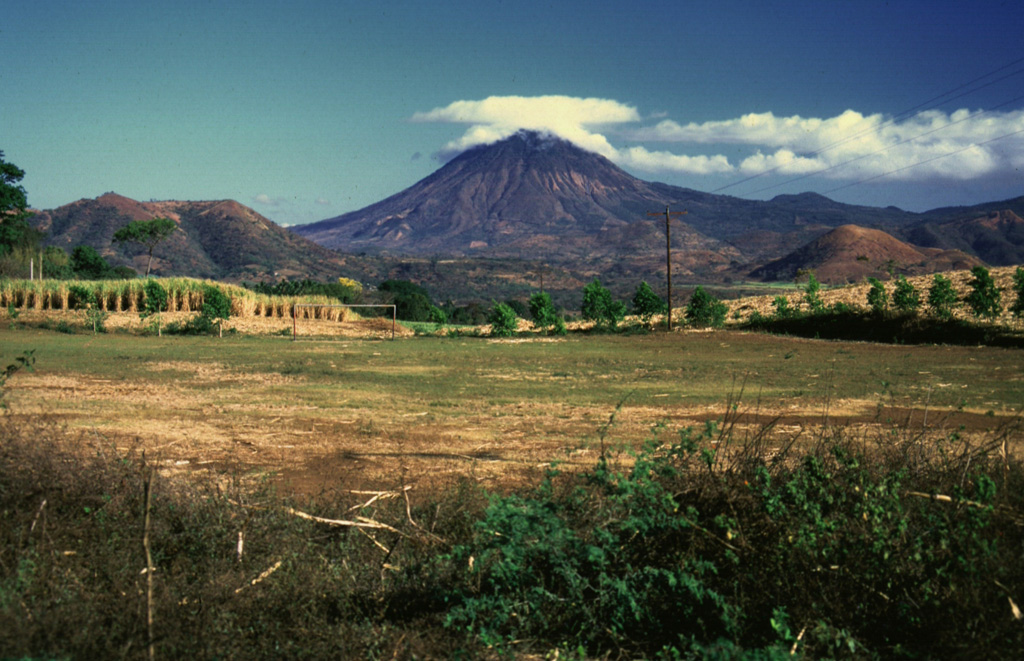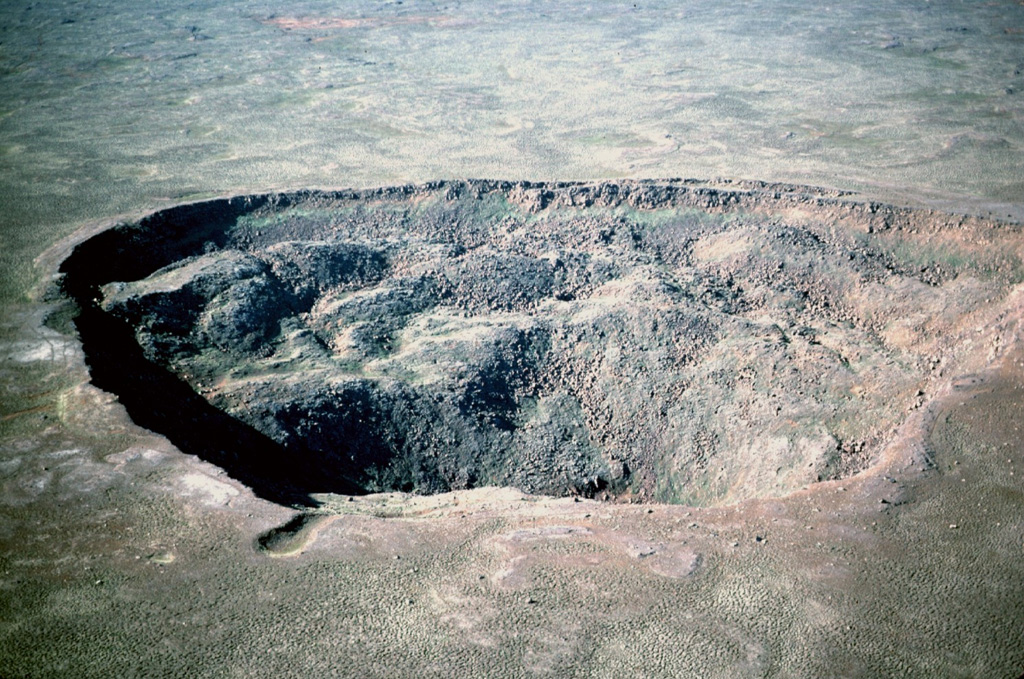Global Volcanism Program
Por um escritor misterioso
Last updated 20 setembro 2024

Volcán Copahue is an elongated composite cone constructed along the Chile-Argentina border within the 6.5 x 8.5 km wide Trapa-Trapa caldera that formed between 0.6 and 0.4 million years ago near the NW margin of the 20 x 15 km Pliocene Caviahue (Del Agrio) caldera. The eastern summit crater, part of a 2-km-long, ENE-WSW line of nine craters, contains a briny, acidic 300-m-wide crater lake (also referred to as El Agrio or Del Agrio) and displays intense fumarolic activity. Acidic hot springs occur below the eastern outlet of the crater lake, contributing to the acidity of the Río Agrio, and another geothermal zone is located within Caviahue caldera about 7 km NE of the summit. Infrequent mild-to-moderate explosive eruptions have been recorded since the 18th century. Twentieth-century eruptions from the crater lake have ejected pyroclastic rocks and chilled liquid sulfur fragments.

Global Volcanism Program

Global Volcanism Program

Smithsonian Institution - Global Volcanism Program: Worldwide Holocene Volcano and Eruption Information

Map of active volcanoes of the Earth and plate tectonic boundaries.

Timeline of eruption history based on the Global Volcanism Program

Global Volcanism Program

Pin on Volcanes

of ∼ 319 Latin American Holocene volcanoes from (Global Volcanism

Global Volcanism Program - The Smithsonian / USGS Weekly Volcanic Activity Report for 5 June-11 June 2019 includes the following volcanoes. Please visit for the full reports. New Activity/Unrest: - Colima

Global Volcanism Program, West Mata in 2023
Recomendado para você
-
 Serie B 2022/202320 setembro 2024
Serie B 2022/202320 setembro 2024 -
 Italian Serie C final tables : r/soccer20 setembro 2024
Italian Serie C final tables : r/soccer20 setembro 2024 -
 Serie A, Liga Italiana resultados, Futebol Itália20 setembro 2024
Serie A, Liga Italiana resultados, Futebol Itália20 setembro 2024 -
 São Paulo estreia na Champions das Américas em busca do bicampeonato - Folha PE20 setembro 2024
São Paulo estreia na Champions das Américas em busca do bicampeonato - Folha PE20 setembro 2024 -
 eBooks Kindle: Serie B 2018/2019: Tutto il calcio in20 setembro 2024
eBooks Kindle: Serie B 2018/2019: Tutto il calcio in20 setembro 2024 -
 Perfecting the Art of Eyewear - Official DITA Worldwide - DITA20 setembro 2024
Perfecting the Art of Eyewear - Official DITA Worldwide - DITA20 setembro 2024 -
 Fase de grupos da Libertadores 2023: classificação, jogos20 setembro 2024
Fase de grupos da Libertadores 2023: classificação, jogos20 setembro 2024 -
 Serie A20 setembro 2024
Serie A20 setembro 2024 -
 CONMEBOL: Confira como ficaram os grupos da Sul-Americana de20 setembro 2024
CONMEBOL: Confira como ficaram os grupos da Sul-Americana de20 setembro 2024 -
 BOAT International The Superyacht and Luxury Yacht Guide20 setembro 2024
BOAT International The Superyacht and Luxury Yacht Guide20 setembro 2024
você pode gostar
-
 The Chosen: Lionsgate compra direitos de distribuição mundial de drama histórico - Metropolitana FM20 setembro 2024
The Chosen: Lionsgate compra direitos de distribuição mundial de drama histórico - Metropolitana FM20 setembro 2024 -
 Bushiroad Announces BanG Dream! FILM LIVE 2nd Stage Anime Film20 setembro 2024
Bushiroad Announces BanG Dream! FILM LIVE 2nd Stage Anime Film20 setembro 2024 -
 Bear Alpha Bear and Whitey | iPad Case & Skin20 setembro 2024
Bear Alpha Bear and Whitey | iPad Case & Skin20 setembro 2024 -
Seek, Valoto20 setembro 2024
-
 Oxford English-English Malyalam Dictionary20 setembro 2024
Oxford English-English Malyalam Dictionary20 setembro 2024 -
 Jogo tabuleiro toca20 setembro 2024
Jogo tabuleiro toca20 setembro 2024 -
 Arifureta Shokugyou de Sekai Saikyou - GoAnimes20 setembro 2024
Arifureta Shokugyou de Sekai Saikyou - GoAnimes20 setembro 2024 -
AQW News Brasil: Tutorial: Nulgath20 setembro 2024
-
 Black Adam - Box Office Mojo20 setembro 2024
Black Adam - Box Office Mojo20 setembro 2024 -
jammer but in gacha20 setembro 2024

